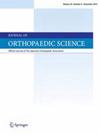Extra-articular coronal protrusion of volar locking plate and screw cutout in the treatment of distal radius fracture in coronal plane: Classification, clinical outcomes and how to prevent
IF 1.4
4区 医学
Q3 ORTHOPEDICS
引用次数: 0
Abstract
Background
Complications related to implant placement can occur during the surgical treatment of displaced distal radius fractures (DRF) with a volar locking plate(VLP). The literature has often focused on implant placement in the sagittal plane, whereas the coronal plane has been neglected. The purpose of this study was to evaluate the effect of VLP protrusions in the coronal plane in the surgical treatment of DRF.
Material and method
Between 2015 and 2022, 302 patients who underwent DRF surgery with VLP between 2015 and 2022 were included in the study. Patients were divided into group 1(anatomically located VLP) and group 2 (protruding VLP and/or screw cutout in the coronal plane), and statistically compared. Patients with radiocarpal intra-articular and sagittal plane protrusions, neurological problems, preoperative DRUJ injury, previous fracture or surgery in the ipsilateral upper extremity, malunion, or incomplete data were excluded. Patients with at least two years of follow-up were included in the study. The Fernandez classification was used for fracture classification. Group 2 patients were classified into subgroups according to the anatomical location of the protrusions: group A (metaphyseal radial styloid side), group B (ulnar metaphyseal side), and group C (diaphyseal side). Functional outcomes were statistically compared between subgroups in terms of the amount of protrusion (≥2 mm and <2 mm), brachioradialis (BR) and abductor pollicis longus (APL) tenosynovitis, distal radioulnar joint (DRUJ) irritation, and necessity for plate removal surgery. QuickDash and PRWE scores were used to assess functional outcomes.
Results
PRWE, QuickDash scores, and plate removal rates were higher in group 2 (p < 0.05).The demographic and radiological parameters were similar between the groups (P > 0.05).Within group 2, functional scores, BR and/or APL tendinitis, and plate removal were higher in group A cases with protrusion ≥2 mm and in group B cases with screw prominence in the DRUJ, whereas no difference was found between group A cases with protrusion <2 mm, group B caseswith pure protrusion of the VLP without screw, and all group C cases. All cases requiring plate removal were in group A ≥2 mm and had BR and/or APL tenosynovitis, and in group B with screws penetrating the DRUJ. Functional scores improved significantly after plate removal in all patients requiring plate removal (p < 0.05).
Conclusion
≥2 mm protrusion in group A and group B cases with screw cutout to the DRUJ, the results are unsatisfactory and implant removal is required in these cases. If the screw hole was left empty in the protruded VLP in group B and in all group C cases, clinical outcomes were not significantly affected.
掌侧锁定钢板及螺钉切开治疗桡骨远端冠状面骨折的关节外冠状突:分型、临床疗效及预防方法。
背景:掌侧锁定钢板(VLP)手术治疗移位性桡骨远端骨折(DRF)时可能发生植入物相关并发症。文献通常集中在矢状面植入,而冠状面被忽视。本研究的目的是评价冠状面VLP突出在DRF手术治疗中的作用。材料和方法:2015年至2022年,302例2015年至2022年期间接受DRF手术合并VLP的患者纳入研究。将患者分为1组(解剖定位VLP)和2组(突出VLP和/或冠状面螺钉切开),进行统计学比较。排除有桡腕关节内和矢状面突出、神经问题、术前DRUJ损伤、既往同侧上肢骨折或手术、畸形愈合或资料不完整的患者。随访至少两年的患者被纳入研究。骨折分类采用Fernandez分类。2组患者根据突出物的解剖位置分为A组(干骺端桡骨茎突侧)、B组(尺侧干骺端侧)、C组(干骺端侧)。结果:PRWE评分、QuickDash评分、钢板取出率均高于组2 (p < 0.05)。在第2组中,功能评分、BR和/或APL肌腱炎、钢板拔除在突出≥2mm的A组和螺钉突出在DRUJ的B组中较高,而在突出的A组中没有发现差异。结论:A组和B组在DRUJ突出≥2mm的情况下,结果不理想,需要拔除种植体。如果B组和C组的所有病例在突出的VLP中保留空螺钉孔,则对临床结果没有明显影响。
本文章由计算机程序翻译,如有差异,请以英文原文为准。
求助全文
约1分钟内获得全文
求助全文
来源期刊

Journal of Orthopaedic Science
医学-整形外科
CiteScore
3.00
自引率
0.00%
发文量
290
审稿时长
90 days
期刊介绍:
The Journal of Orthopaedic Science is the official peer-reviewed journal of the Japanese Orthopaedic Association. The journal publishes the latest researches and topical debates in all fields of clinical and experimental orthopaedics, including musculoskeletal medicine, sports medicine, locomotive syndrome, trauma, paediatrics, oncology and biomaterials, as well as basic researches.
 求助内容:
求助内容: 应助结果提醒方式:
应助结果提醒方式:


